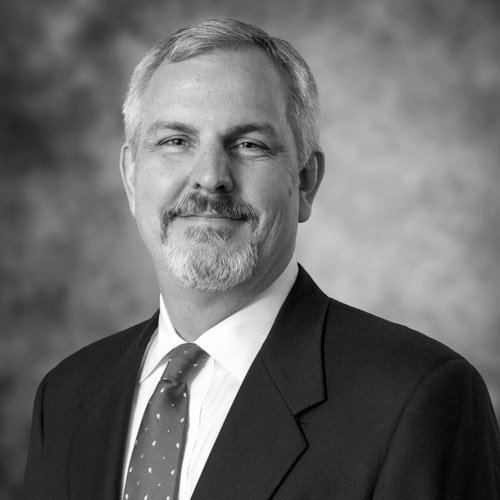While the business world becomes more dependent on IT for every aspect of its existence, Bruce Flitcroft, founder and CEO of TenFour, has found a way to make the necessary IT infrastructure easier and cheaper for companies to consume.
He’s doing this by transforming the IT infrastructure industry with a utilities business model.
“Today with IT, the consumer takes on all the risk. They take on the financial risk with its purchase, deployment, operations, and return on investment,” Flitcroft explains. “For example, if the IT equipment doesn’t work properly, the consumer is told to upgrade at his or her own expense. The consumer is told to keep spending until it works. Consumers are so anxious to get to the endgame because they’re so dependent on the technology, they forget they’ve been handed all the risk.”
Flitcroft says TenFour has greatly mitigated these risks for its customers. “With our model, if the IT doesn’t work, you’re not paying for it; you only pay for what actually works,” he says. “Our model turns IT infrastructure into a utility that removes risk from the corporate consumer and pushes it back to the IT company.”
IT can work as a utility, similar to how cell phone and energy industries work, according to Flitcroft. “If you don’t like the service because your phone doesn’t work to your standards, you switch companies,” he explains. “When the Industrial Revolution started, consumers had their own generators that their own personnel maintained. Then Con Edison turned that energy into a utility model, where it was mass produced and made it easier to consume. Then consumers only had to pay for what they consumed.”
Fast-forward to the IT industry and make the same comparison, Flitcroft says. “For the last thirty to forty years, businesses have built, owned, and maintained their own IT systems with their own large staff. This includes local area networks, phone systems, data systems, and software,” he explains. “But because the IT—such as virtualization and broadband technology—has matured, there’s an opportunity to turn it into a utility. Yet, businesses are still active in building and maintaining their own infrastructures.”
The beginning of IT as a utility model has emerged with cloud service, a type of Internet-based computing that provides shared computing processing resources and data on demand. Cloud allows companies to avoid upfront infrastructure costs and allows the focus to be catered to the core businesses.
“Cloud is a data center that consumers use, but they don’t own, operate, and deploy their own software. Instead, they share the service and the service charges per usage,” Flitcroft says. “However, the cloud is only limited to storage and computing. We have extended that model across all business essential IT infrastructure platforms, including wide area network, local area network, unified communications, data center, and network security.”
Flitcroft says his team is looking to include IT services in that utility model that one can’t put in a data center, which includes switches, routers, cables, video screens, and end-point devices. “At this time, companies still have to expend much energy, time, and money to build and maintain the overhead for these services and platforms,” he explains. “Our company is turning all of those services into utilities. We custom-build the platforms for consumers and maintain them so if they don’t work, we are responsible for fixing it. If they don’t use the services, they don’t pay for them.”
TenFour also breaks down IT into quantifiable units. For example, the fuel industry breaks down gas into BTUs—measurable units. Flitcroft explains that, like gas, TenFour turns IT infrastructure into measurable components called configuration items, and it charges monthly for them so customers can turn the service up and down as needed.
“TenFour’s customers save their IT budget for bigger and better things,” Flitcroft says. “The innovative things that help them grow their business and differentiate them in their own industry.”
Customers normally spend 15–30 percent of their IT budget on infrastructure expenses, according to Flitcroft. “Most of their IT staff is tied up in building and maintaining a monolithic infrastructure. Without their staff having to do that, now they can move into other areas like application deployment projects, data analytics, and IT process engineering,” he adds. “The real value of IT isn’t in maintaining its infrastructure; the value is in its business applications and getting data out of them.”
This process is responsible for saving companies money on IT, which Flitcroft says has historically been a complicated and labor-intensive industry. “But we’ve automated much of it and changed the supply chain structure,” he says.
Flitcroft adds that companies that switch its IT to this utility model don’t have to downsize the IT staff, but rather position them for more strategic purposes. “It’s a lot harder to get people off the street with IT skills,” he says. “It’s easier to take your employees who already know your IT structure and expose them to new technology.”
Flitcroft, who studied biochemistry and was on the premed track at New York University before switching careers to IT after a summer internship, knows the meaning of taking risks.
“Honorable, fearless, and innovative—those are the profile characteristics we use for people who want to work with TenFour,” he says. “We’re fearless because we’re a little company of 150 employees that is taking on an entire industry. We’re already operating twenty-seven major global networks, and we’re growing better and faster than our competition. We have a certain amount of arrogance for a little company to disrupt and change the consumption model in the IT market.”
Flitcroft admits, however, that some people have questioned if a smaller company such as TenFour can handle global infrastructure. “They think we have to be as large as IBM or Google. My answer to that is we don’t have to be a big bureaucratic company to deliver fast global infrastructure. We prove that by managing the global IT infrastructures for some of the most well-known brands in the world, including Fortune 500 companies,” he explains. “Our IT infrastructure utility consumption model is getting companies back to innovating again.”

